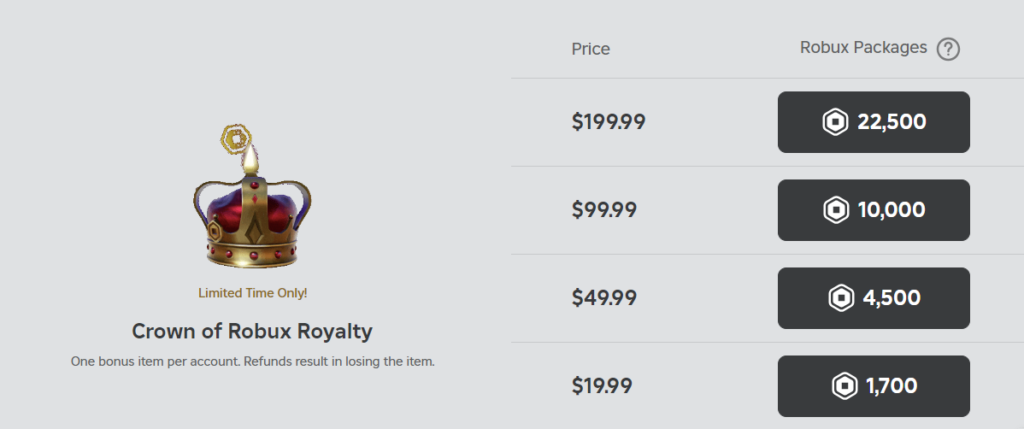If you're not a kid or a parent of school-aged children, you might not be familiar with Roblox. Yet, this online platform has quickly become a favorite among young gamers. Unlike games like Fortnite or Grand Theft Auto, which boast universal appeal, or Minecraft, with its globally recognized name, Roblox has carved out a unique space in the gaming world. With over 77.7 million active users, its popularity continues to grow. The platform’s diverse, user-generated content not only keeps players engaged but also fosters a vibrant and ever-expanding community.
Roblox’s appeal is especially strong among Generation Z. The platform’s largest age group, children aged 9 to 12, makes up 23% of its user base, underscoring its cultural significance among younger audiences. In this guide, we’ll take an in-depth look at what Roblox is, why it’s so popular, and how it’s shaping the future of online gaming for kids and teens alike.
What is Roblox?
Roblox technically isn’t a game. It is a gaming environment aimed at children. Roblox users download the Roblox app to their computer, game console, phone, or tablet. They then select a Roblox game to play each time they open the app.

Source: roblox.com
It may surprise you to know that Roblox has been around since 2006. This predates even Minecraft. There are now more than 40 million games in the environment. Your son or daughter certainly can't complain that they can't find something that they would like on the platform.
The makers of Roblox have provided the tools and gaming environment. They have left it to the Roblox community to use their imagination and create the games.
Roblox also acts as a mini social platform, providing the opportunity for its users to add friends and chat. It allows players to
“Imagine, socialize, chat, play, create, interact and relate with others in many ways.”
How Popular is Roblox?
Roblox has become a leading platform for children’s gaming, appealing to a diverse audience across different age groups and genders. As of Q1 2024, the platform boasts an impressive 16.7 billion global engagement hours, marking a significant increase from the previous year's 14.5 billion. Roblox’s user base is diverse: male players make up 53% of the demographic, while female players represent 39%. Interestingly, 8% of users choose not to identify with a specific gender. The platform is particularly popular with younger audiences, with 32 million daily active users aged 13 and under, up from 28.7 million the previous year. With an estimated daily revenue of $2.29 million, Roblox’s influence in the gaming world continues to grow, offering a vast collection of games and a dynamic social environment that keeps players engaged and connected.
Although Roblox is less popular than YouTube with youngsters, the game company recognizes the importance of that video platform for building their followers. In much the same way that Twitch influencers record their games and share long-form videos of them on their YouTube channels, Roblox gamers record their games and share them through YouTube.
Roblox claims that they gain most of their players through word-of-mouth. A kid likes a game and invites his or her friends to join. They, too, join Roblox and tell their friends about it.
Note Roblox isn't just a game to play cocooned in your room, socially isolated. It is a game environment where players join up with their friends in a social setting.
Children love Roblox because it now offers a vast collection of games. You can track those games you are playing, collect badges, and create universes online. It has a similar look and feel to Minecraft and Lego.
How Does Roblox Work?
When you think of making a game, you probably imagine a gaming studio full of young boffins slaving over millions of lines of code. Indeed, that does describe many popular games on the market, although the vast majority have large teams, all specializing in one specific task. Indeed, that is probably how the gaming platform of Roblox was developed.
But Roblox is a game environment. It isn’t a game as such. It’s not like Fortnite, for instance, where millions of players from around the world have virtual battles. Each group of players in Fortnite may play a distinct game, competing against each other. However, despite the multiple games that play concurrently around the world, and gameplay variations depending on the options you choose, Fortnite is still recognizably Fortnite. These players are all still playing the same game.
Roblox is different. There are millions of different games in Roblox. Sure they have a similar look and feel – they all exist within the same graphical environment. But they don’t co-exist in the same gaming world. Each Roblox-created game is a different and separate game. Yet users can download every game in the Roblox environment and don’t need any additional software unless they wish to create a game. You can play a Roblox version of virtually every game genre imaginable, from racing games to action games to roleplaying games to shooting games.
How Safe is Roblox?
As with many online platforms that cater to children, safety is a significant concern when it comes to Roblox. Numerous reports and discussions have emerged questioning whether Roblox is a safe environment for its young players. Critics have raised alarms about the potential for adults to exploit the platform, similar to concerns expressed about other social media platforms like TikTok and YouTube.
Media outlets have highlighted troubling incidents, such as inappropriate content and interactions. For instance, reports have surfaced about players encountering explicit role-playing scenarios, leading to outrage among parents. In response to these concerns, Roblox developers have taken action, stating their commitment to maintaining a safe environment by banning users who violate community standards.
One of the challenges of a platform that encourages creativity is that some users may express themselves inappropriately. It's essential to remember that Roblox primarily targets an audience aged 8 to 18, meaning that teenagers and young children are both active on the platform.
Roblox has acknowledged the worries expressed by parents and has implemented various measures to enhance safety. The platform features a dedicated section for parents that outlines available safety tools. These include chat filters, reporting mechanisms, and customizable parental controls to help manage children's interactions and experiences on the platform.
In addition to these features, Roblox has established Community Standards that govern acceptable behavior. The platform employs moderators to review content and enforce these guidelines, aiming to create a safer gaming environment for its users. Parents are encouraged to utilize the available resources and tools to monitor their children's activity and ensure a positive experience while playing Roblox.
Making a Roblox Game
The majority of Roblox players are happy to play its games, just like they do any other videogames. They are no different to those people who spend their time on YouTube or TikTok merely watching content. They are content users rather than creators. However, the more ambitious Roblox users like to create games in the environment. They download the Roblox Studio software, where they can "make anything." Roblox claims that
"Roblox Studio lets you create anything and release with one click to smartphones, tablets, desktops, consoles, and virtual reality devices."

Source: create.roblox.com
How to Make Money on Roblox
Although the vast majority of Roblox games are free-to-play, many include advertising and microtransactions. This follows the same pattern as many of the games you find in the Android and iOS stores.
There is a definite market for well-created Roblox games. The Roblox Studio site claims that
"Creators like you are getting paid for what they love to do. Our top developers are earning over $2M a year by providing in-game purchases."
You do have the option to charge for your Roblox games, although unless you have already built yourself a name, you will struggle against all the free games on offer. Some Roblox developers have got away with charging a one-time entry fee to their game, marketing it as being an access payment.
Another successful way that popular games make money is by charging for Game Passes. These work where you have a lot of downloadable content (DLC) and the Game Passes effectively give access to the DLC.
Roblox makes in-game commerce possible by having a virtual currency – Robux. Players buy Robux with real cash, and then “spend” Robux for items within the games of their choice. Developers build up Robux from the games they make and then exchange Robux back for real money.

Source: roblox.com
However, not everybody who has created a game can exchange in-game Robux for real money. To be able to do this, you need to work through the official Developer Exchange and:
- Be at least 13 years of age or older.
- Have a minimum of 30,000 “earned” Robux in your account.
- Ensure your email address is verified.
- Have an active DevEx portal account.
- Be an active community member in good standing, compliant with Roblox's Terms of Use.
Marketing on Roblox
Roblox has expanded its advertising options, now offering more robust and immersive advertising solutions. While it doesn’t yet have a full-scale advertising platform like other social networks, Roblox has introduced several innovative tools to help developers and brands reach their audiences effectively.
One of the most notable changes is the sunsetting of User Ads. Previously, developers could use this feature to promote their games, groups, or virtual items on the platform. However, this feature was discontinued in June 2024. Users can no longer create or display new User Ads, but Roblox continues to explore new methods for group and item discovery.
In place of User Ads, Roblox now emphasizes its Ads Manager platform, which supports a variety of ad types, including Immersive Ads and Sponsored Experiences. Immersive Ads allow developers and brands to integrate video, portal, and image ads directly into the 3D environments of Roblox experiences. This approach creates a seamless and engaging way for users to interact with ads, making them a natural extension of the platform rather than a disruptive element.
Additionally, Sponsored Experiences continue to be a popular option, allowing games to be promoted directly within various lists and categories on Roblox. These promotions are still clearly marked as sponsored content but otherwise blend in with the other games available on the platform.
Both Sponsored Experiences and Immersive Ads utilize a bidding system. Developers bid in Robux for their ads to run, choosing the specific platform (web, tablet, or phone) where they want their marketing to appear.
These updates make Roblox a more dynamic space for developers and brands looking to connect with the platform's diverse and engaged user base.
Conclusion
Roblox has grown beyond its origins as a simple online gaming platform to become a vibrant and expansive virtual universe that captivates a diverse audience, particularly younger players. Its success lies in the unique combination of user-generated content, social interaction, and the freedom to create, explore, and connect. Unlike other gaming platforms, Roblox offers a distinct experience that fosters creativity and community, making it a standout in the industry.
As the platform continues to evolve, it has solidified its place as a cultural phenomenon, particularly among children and teens. With an ever-growing user base and a commitment to safety and innovation, Roblox is set to remain a key player in the online gaming landscape. Whether you're a player eager to dive into new adventures or a developer aiming to create the next hit game, Roblox provides endless possibilities and opportunities for engagement.
Roblox’s influence on the future of gaming is undeniable, as it continues to push the boundaries of what an online platform can achieve. Its unique approach to combining play, creativity, and social interaction ensures that it will continue to resonate with the current generation and those that follow.
Frequently Asked Questions
What is Roblox?
Roblox is an online platform that allows users to create, share, and play games, referred to as "experiences." It combines gaming, social interaction, and user-generated content, enabling players to engage in various genres, including roleplay, adventure, and simulation. Users can also customize their avatars and interact with others in a virtual environment.
How does Roblox work for game creators?
Roblox provides a development tool called Roblox Studio, which allows users to create their own games using the Lua programming language. Once created, these games can be published on the platform for others to play. Developers can monetize their games through in-game purchases, earning a portion of the revenue generated from these transactions.
Is Roblox free to play?
Yes, Roblox is free to download and play. Most games on the platform are accessible at no cost, but users can make in-game purchases using the virtual currency called Robux. This currency can be bought with real money or earned through gameplay, allowing players to purchase upgrades, accessories, and other virtual items.
Who is the target audience for Roblox?
Roblox primarily targets children and teenagers, with a significant portion of its user base consisting of individuals aged 9 to 12. However, the platform has seen a growing demographic of older users, particularly those aged 17 to 24, as its popularity continues to expand across different age groups.
What are the safety measures in place for Roblox users?
Roblox implements various safety features to protect its users, particularly younger players. These include customizable parental controls, chat filters, and a reporting system for inappropriate content. Parents are encouraged to familiarize themselves with these tools and engage in conversations with their children about safe online practices while using the platform.



